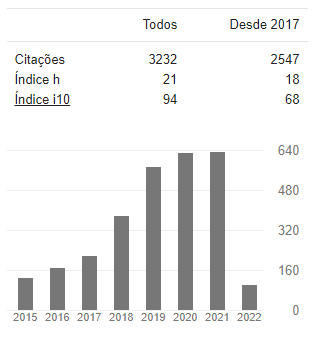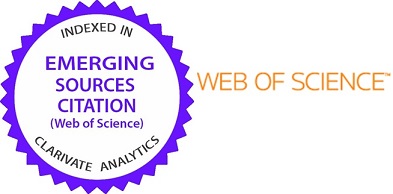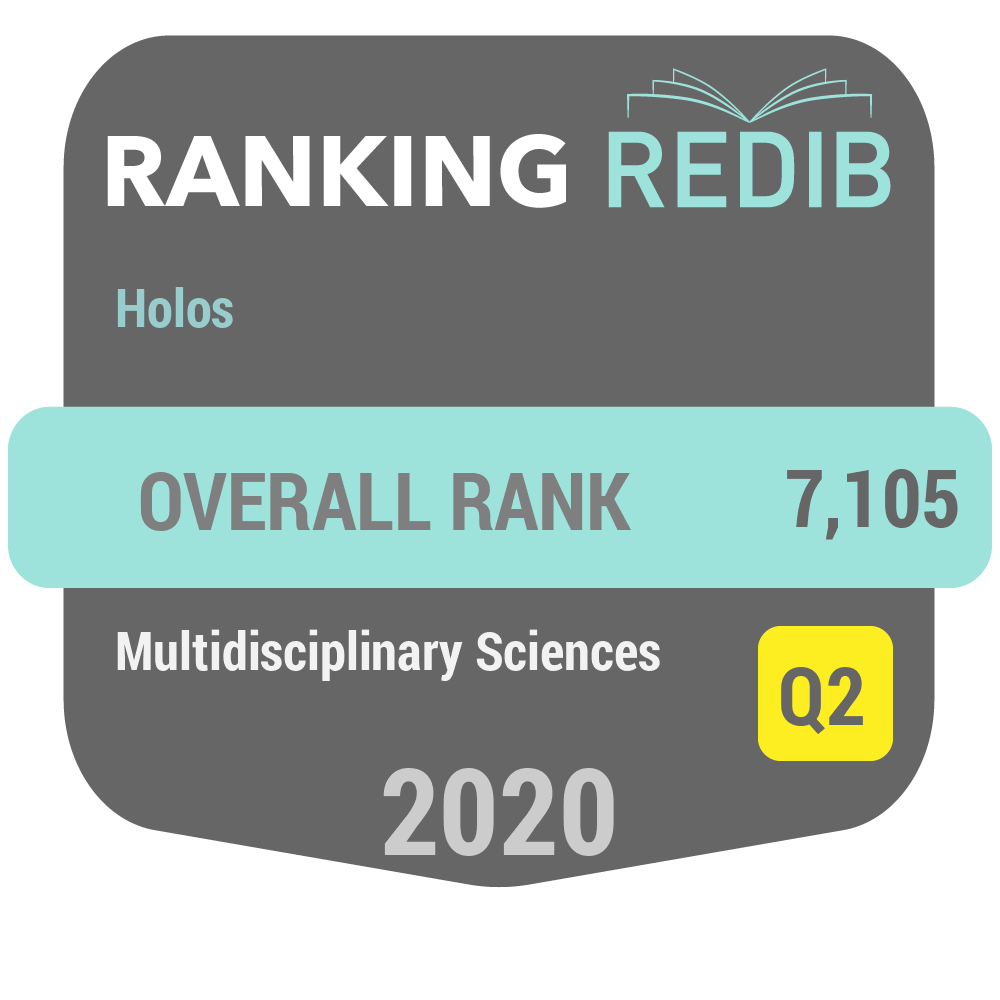Efficiency Enhancement in Polycrystalline CdS/CdTe Solar Cell via Diffraction Grating and Engineering Absorber and Back Surface Field Layers
DOI:
https://doi.org/10.15628/holos.2018.7668Palavras-chave:
Cadmium sulfide/cadmium telluride, polycrystalline CdS/CdTe solar cell, conversion efficiency, diffraction grating, engineering absorber and back surface field layers, carrier lifetimeResumo
In this paper, the effect of diffraction grating and engineering absorber and back surface field (BSF) layers on performance of a single-junction polycrystalline cadmium sulfide/cadmium telluride (CdS/CdTe) solar cell have investigated. At first, the electrical characteristics of reference CdS/CdTe solar cell is simulated and validated with experimental data of fabricated CdS/CdTe solar cell. In order to improve the maximum efficiency, a new structure with diffraction grating and engineering absorber and back surface field layers is presented. Furthermore, the effect of carrier lifetime variation in the absorber layer on the conversion efficiency of solar cell was investigated. It is found that diffraction grating and engineering absorber and back surface field layers can increase the conversion efficiency of the solar cell by about 1.02% and 6% compared with reference cell, respectively. Under global AM 1.5 conditions, the open circuit voltage, short circuit current density, fill factor and conversion efficiency of optimized solar cell structure are 1114 mV, 25.35 mA/cm2, 0.8856 and 25.022%, respectively.
Downloads
Referências
Amin, N., Sopian, K., & Konagai, M. (2007). Numerical modeling of CdS/CdTe and CdS/CdTe/ZnTe solar cells as a function of CdTe thickness. Solar Energy Materials and Solar Cells, 91, 1202-1208.
Aramoto, T., Ohyama, H., & Kumazawa, S. (1997). 16.0% Efficient thin film CdS-CdTe solar. Jpn. J. Appl. Phys., 36, 6304-6305.
Britt, J., & Ferekides, C. (1993). Thin?film CdS/CdTe solar cell with 15.8% efficiency. Applied Physics Letters, 62, 2851-2852.
Colegrove, E., Banai, R., Blissett, C., Buurma, C., Ellsworth, J., Morley, M., & Sivananthan, S. (2012). High-Efficiency Polycrystalline CdS/CdTe Solar Cells on Buffered Commercial TCO-Coated Glass. Journal of Electronic Materials, 41, 2833-2837.
First Solar Inc., http://investor.firstsolar.com/releasedetail.cfm?, 2014
Green, M. A., Emery, K., Hishikawa, Y., Warta, W., & Dunlop, E. D. (2016). Solar cell efficiency tables (version 48). Progress in Photovoltaics: Research and Applications, 24, 905-913.
http://www.silvaco.com/products/device_simulation/atlas.html.
Jensen, S. A., Burst, J. M., Duenow, J. N., Guthrey, H. L., Moseley, J., Moutinho, H. R., & Metzger, W. K. (2016). Long carrier lifetimes in large-grain polycrystalline CdTe without CdCl2. Applied Physics Letters, 108, 263903.
Khosroabadi, S., Keshmiri, S. H., & Marjani, S. (2014). Design of a high efficiency CdS/CdTe solar cell with optimized step doping, film thickness, and carrier lifetime of the absorption layer. Journal of the European Optical Society: Rapid Publications, 9, 891-896.
Kosyachenko, L., Savchuk, A., & Grushko, E. (2009). Dependence of efficiency of thin-film CdS/CdTe solar cell on parameters of absorber layer and barrier structure. Thin Solid Films, 517, 2386-2391.
Krishnakumar, V., Han, J., Klein, A., & Jaegermann, W. (2011). CdTe thin film solar cells with reduced CdS film thickness. Thin Solid Films, 519, 7138-7141.
Mahoodi, M., & Marjani, S. (2017). Performance enhancement of polycrystalline CdS/CdTe solar cell by diffraction grating and engineering layers. The 8th National Conference on Physics, 223-227.
Mahoodi, M., & Marjani, S. (2017). Enhanced photovoltaic performance of ultrathin polycrystalline CdS/CdTe solar cell via indium antimonide absorber layer. The 2nd International Conference on Electrical Engineering (IC-EE)s, 1-4.
Mahoodi, M., & Marjani, S. (2017). High-efficiency polycrystalline CdS/CdTe/InSb/CdTe solar cell with step doping grading of absorber and back surface field layers. The 4th National Conference on Information Technology, Computer and Telecommunication (ITCT), 1-7.
Mahoodi, M., Peiravi, A., & Marjani, S. (2018). Time to failure analysis of polycrystalline CdS/CdTe/InSb/CdTe solar cells. The 8th International Conference on Nanotechnology (ICN), 1-3.
Marjani, S., Khosroabadi, S., & Sabaghi, M. (2016). A high efficiency ultrathin CdTe solar cell for nano-area applications. Optics and Photonics Journal, 6, 15-23.
Peña, J., Arés, O., Rejón, V., Rios-Flores, A., Camacho, J. M., Romeo, N., & Bosio, A. (2011). A detailed study of the series resistance effect on CdS/CdTe solar cells with Cu/Mo back contact. Thin Solid Films, 520, 680-683.
Razykov, T., Ferekides, C., Morel, D., Stefanakos, E., Ullal, H., & Upadhyaya, H. (2011). Solar photovoltaic electricity: Current status and future prospects. Solar Energy, 85, 1580-1608.
Rios-Flores, A., Arés, O., Camacho, J. M., Rejon, V., & Peña, J. (2012). Procedure to obtain higher than 14% efficient thin film CdS/CdTe solar cells activated with HCF2Cl gas. Solar Energy, 86, 780-785.
Sabaghi, M., Majdabadi, A., Khosroabadi, S., & Marjani, S. (2015). A novel ultrathin CdS/CdTe solar cell with conversion efficiency of 31.2% for nano-area application. The Progress in Electromagnetics Research Symposium (PIERS), 1152-1155.
Sabaghi, M., Majdabadi, A., Marjani, S., & Khosroabadi, S. (2015). Optimization of high-efficiency CdS/CdTe thin film solar cell using step doping grading and thickness of the absorption layer. Orient. J. Chem.,, 31, 891-896.
Wu, X., Keane, J.C., Dhere, R.G., Dehart, C., Albin, D. S., Duda, A., Gessert, T. A., Asher, S., Levi, D. H., & Sheldon, P. (2001). 16.5% Efficient CdS/CdTe polycrystalline thin film solar cell. 17th Conf. IEEE European Photovoltaic Solar Energy, 995-1000.





































